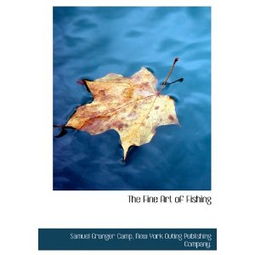Content:
Introduction: Fishing in the winter months can be a challenging endeavor, especially when it comes to cold water reservoirs. The cold temperatures can make fish less active and more difficult to catch. However, with the right techniques and knowledge, you can still enjoy a successful fishing trip. In this article, we will discuss the essential cold water reservoir fishing techniques specifically tailored for winter.
Choose the Right Location: The first step in cold water reservoir fishing is to select the right location. Look for areas with deep water, as fish tend to seek warmth in deeper depths during the winter. Additionally, focus on areas with plenty of structure, such as rocks, submerged trees, and weed beds, as these provide shelter and attract fish.
Understand Fish Behavior: During the winter, fish become less active and more conservative in their movements. They tend to stay in deeper water and move slower. To attract them, it is crucial to understand their behavior. Fish in cold water reservoirs are more likely to be found near the bottom, so focus your efforts on casting your bait or lure close to the bottom.
Adjust Your Approach: In cold water, fish are less likely to bite on fast-moving baits or lures. Instead, use slower and more subtle presentations. For example, when using a spinning rod, cast your lure or bait close to the bottom and retrieve it slowly. This mimicry of natural prey movement can trigger fish to bite.
Optimize Your Bait Selection: During the winter, fish have a lower metabolism, so they are less interested in high-protein baits. Instead, opt for baits that mimic natural food sources such as insects, crustaceans, or small fish. Live bait, such as minnows or leeches, can be highly effective in cold water reservoirs. Additionally, consider using artificial lures that resemble these natural prey.

Use the Right Tackle: In cold water reservoir fishing, it is essential to use the right tackle to ensure a successful catch. Here are a few key points to consider:
a. Lighter Tackle: Since fish are less active, use lighter tackle to avoid overloading them. This will make it easier to catch and release them without causing unnecessary stress.
b. Stronger Line: Even though you are using lighter tackle, ensure that your line is strong enough to handle the fish's size and strength. A good rule of thumb is to use a line that is at least 20% stronger than the fish you are targeting.
c. Sensitive Reel: A reel with a smooth drag and a sensitive drag system is crucial in cold water reservoir fishing. It allows you to detect subtle bites and adjust your presentation accordingly.
Timing is Key: Fish in cold water reservoirs are more active during the warmer parts of the day, such as late morning and early afternoon. During these periods, fish are more likely to feed and be more active. Plan your fishing trip accordingly, focusing on these peak times.
Dress Appropriately: Winter fishing can be extremely cold, so it is essential to dress appropriately. Wear thermal clothing, a waterproof jacket, gloves, and a hat to keep warm. Remember that staying warm and comfortable will enhance your overall fishing experience.
Conclusion: Cold water reservoir fishing during the winter can be challenging, but with the right techniques and knowledge, you can still enjoy a successful fishing trip. By choosing the right location, understanding fish behavior, adjusting your approach, optimizing your bait selection, using the right tackle, focusing on peak times, and dressing appropriately, you can increase your chances of catching fish in cold water reservoirs. So, bundle up, hit the water, and apply these techniques to make your winter fishing adventures more rewarding.












